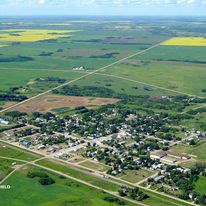MARYFIELD - Gophers were killing the cash crops of Saskatchewan.
The new Wellington municipality ordered strychnine to be mixed with wheat and put it down gopher holes. The rodents, mad for water, dug into the barn well and three of my father’s young mares died.
The next well had a two-foot cement footing to support a windmill. On it were the names Dolly, Skipper and Bright. The dead horses were hauled to a slope within rifle range for the coyotes.
I was the child at the window when the call came that my grandfather had died. My question was when are they going to haul him out?
Mary Houston, registered nurse, had cared for the wounded and dying in France in 1918. She left public health in Manitoba to be there when baby cousins were due and to care for her dying father.
The only medicine they had to ease his pain was giving him a bottle of whiskey. There was enough lumber and the two younger sons had to build the coffin. My father shared nurse Mary’s vigil. When it was over they shared the remainder of the “medicine”, safe from the little children.
Mrs. Morgan came to stay with the wee ones while my mother went to play granny’s piano at the stone house. There was no resident Anglican clergy and the new Tyvan cemetery was halfway between Tyvan and the farm.
Neighbours crowded the parlor and dining room and then hastily scrubbed the sick room. It was nurse Mary who led the order for the burial of the dead from the Book of Common Prayers. My father only went to church when one of us five children were baptized or to be a pall bearer. One did not refuse.

